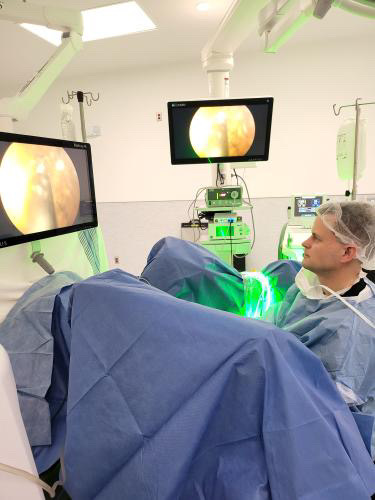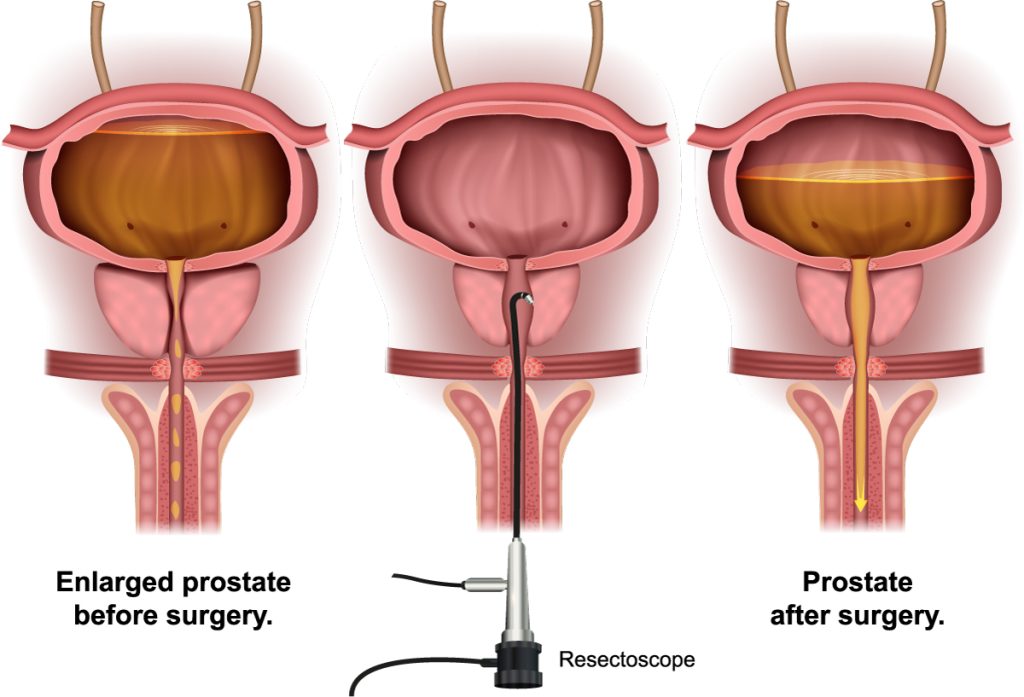Home > Treatments > Turp
The treatment involves the insertion of a thin instrument called a resectoscope through the tip of the penis and into the urethra. The resectoscope allows your doctor to remove the excess prostate tissue that is preventing the urine from flowing.
This procedure does not require making any incisions to your body, and overall takes around an hour to complete. Patients who undergo TURP will be able to return to their everyday activities within a couple of weeks after the procedure.
The TURP procedure treats several different urinary symptoms caused by benign prostatic hyperplasia (BPH), including:
It also prevents issues that arise due to a blocked urine flow, such as:
Additionally, TURP provides patients with fast results. Most men notice an improvement in their urinary symptoms within just a few days after the procedure. It also allows patients to return to their regular daily activities within several weeks of recovery.
Find your BPH symptom score.
Consult with our world-class medical experts within days of your call.
Instead, the resectoscope is inserted into the tip of your penis. It then extends through your urethra and into the prostate area.
The resectoscope is used to trim the excess prostate tissue from the inside of your prostate gland. As these small pieces of tissue are cut, irrigating fluid transports them to your bladder. They are then removed at the end of the procedure.


A TURP procedure generally takes around 60 to 90 minutes to perform, depending on how much of your prostate needs to be removed. Once the procedure has been completed, you'll be moved back to your room to recover.
After the procedure, you will be required to remain overnight for observation. You will have a urinary catheter in place due to the swelling that blocks the flow of urine. The catheter will be kept for at least 24 to 48 hours. Once the swelling decreases and you are able to urinate on your own, the catheter will be removed.
Overall, it takes about 4 to 6 weeks to fully recover from TURP. Avoid doing any strenuous exercise or lifting heavy objects until your doctor tells you that it is okay to do so. If you are taking prescription pain medications after the procedure, do not drive a vehicle or operate any machinery. If your job does not require any physical exertion, you may return to work after 2 to 3 weeks.
Effective BPH symptom relief with minimally invasive and low risk treatments.

